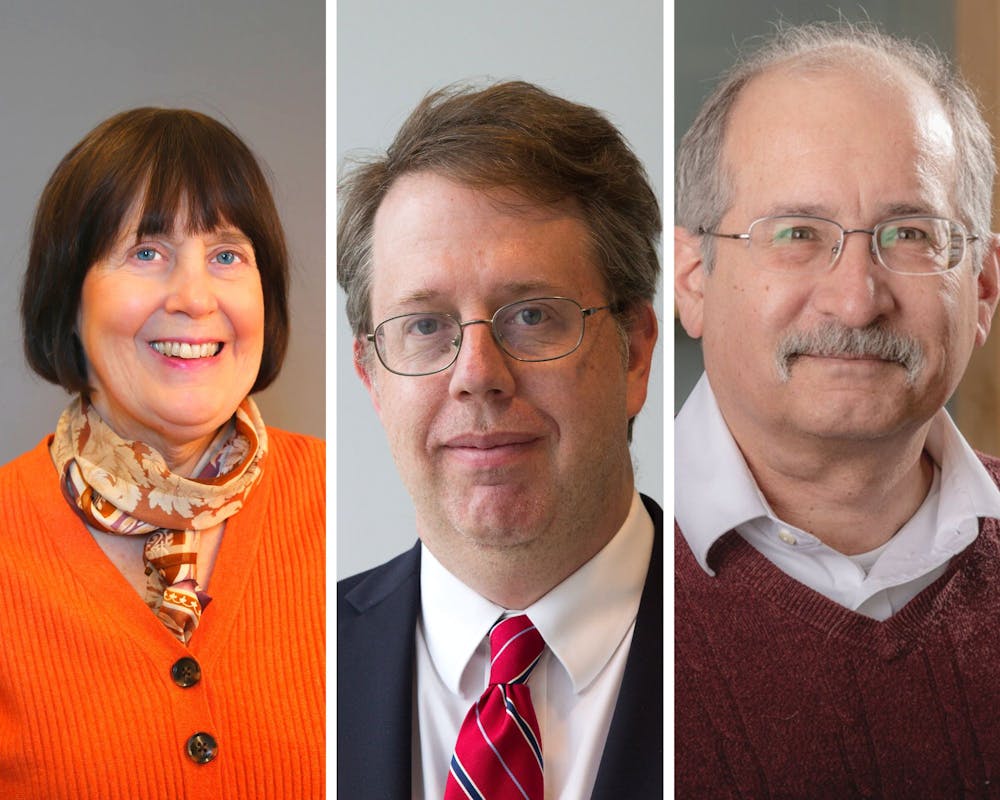The American Association for the Advancement of Science elected three University faculty members as AAAS Fellows last month, an honor that recognizes each inductee’s contributions to the field of science.
The AAAS is the "world's largest multidisciplinary scientific society," according to the organization’s website. According to Sudip Parikh, chief executive officer of the organization and executive publisher of the “Science” family of journals, the AAAS is unique in its mission to “recognize folks who have made a difference in science and society.”
This year, the organization named 505 fellows. The honor is peer-nominated and then reviewed by one of the association’s 24 steering groups, according to Parikh. The fellowship is a lifetime honor.
“There are some very strong researchers at Brown who are recognized in their fields as having outstanding contributions,” Parikh said. “That's something to be celebrated.”
Linda Abriola, professor of engineering
Linda Abriola uses mathematical modeling to study how polyfluoroalkyl substances — commonly known as “forever chemicals” — are transported in the environment. Her work focuses on the movement of these toxins through groundwater and on their removal methods.
Also called PFAS compounds, polyfluoroalkyl substances have been used in manufacturing since the 1960s in waterproof coatings, pizza boxes, dental floss and firefighting foams, Abriola said. Despite the chemicals’ toxicity and prevalence — they have been detected in people’s bloodstreams — PFAS compounds are poorly regulated and poorly understood, she added.
“There are thousands of these compounds and right now only a couple are regulated to any degree in most states,” Abriola said.
Abriola said one of her favorite parts of researching is the collaborative process of designing and interpreting experiments, which often involves students.
The AAAS elected Abriola to their 2022 class for her “outstanding contributions to our understanding of the transport and persistence of contaminants in the subsurface and the design of remedial strategies,” according to a list of the 2022 fellows provided to The Herald by the AAAS.
Abriola said she was “very honored” to be named a fellow. “It's always great to get … this kind of recognition,” she said, “especially when it comes from your peers.”
Alfred Ayala, professor of surgery (research)
Alfred Ayala studies the relationship between septic shock, a life-threatening condition typically caused by infection, and multiple organ failure in severely injured individuals.
“Our mission is to try and understand what we can do to mitigate the severity of sepsis, shock and trauma,” Ayala said.
Multiple organ failure — which refers to when infection or trauma causes dysfunction in numerous organ systems — is one of the most common causes of hospital deaths and one of the most expensive to treat, he explained. Unlike acute illnesses, which can be effectively targeted with specific therapies, treatment for multiple organ failure relies on less effective supportive agents to maintain organ function.
Ayala’s lab has researched how cell death hinders immune response in patients of multiple organ failure, and also whether checkpoint proteins — those responsible for regulating immune responses — might improve outcomes.
Recently, Ayala’s lab has shifted towards the question of how autoimmune diseases and comorbid conditions can affect an individual’s risk for developing severe sepsis. His lab is also interested in understanding how these comorbid conditions drive changes in the epigenome, thereby affecting immune response.
“What really motivates me is the discovery process,” said Ayala, who is affiliated with both Rhode Island Hospital and the Alpert School of Medicine. “The thing that excites me the most is (being) together on a journey with all these other folks trying to identify answers about these questions.”
Ayala’s fellowship stemmed from his contributions to “understanding the role of effectors of immune cell function in sepsis and shock and resulting lung damage, and for significant contributions to student training (and) mentoring and professional societies,” according to the AAAS list.
Brendan Hassett, director of the Institute for Computational and Experimental Research in Mathematics
Brendan Hassett, professor of mathematics, studies algebraic geometry, a field that examines solutions to polynomials. Hassett described his work as a way to link geometric visuals with mathematical equations — “We’re interested in developing intuition,” he said.
While computers are well-suited to solving mathematical equations, the process of visualizing equations can also offer compelling answers to mathematical problems, Hassett said.
“Sometimes I think that it will take computers weeks to do what you can just see from a visualization perspective,” he said, adding that this makes algebraic geometry useful in theoretical physics, which often entails complex mathematical equations.
Hassett’s current research looks specifically at polynomials with integer solutions. Hassett explained how algebraic geometry is applied in error-correcting codes and cryptography. For instance, families of equations with certain geometric structures can be used to design encryption and decryption algorithms on the internet.
Hassett described the importance of building a collaborative community of mathematicians at Brown. “I like developing communities of people to talk to each other,” he said. “We try to create communities of researchers that are united by an interest in a common set of problems. And by bringing them together, hopefully, they can do a lot more together.”
The AAAS recognized Hassett “for significant contributions to the field of algebraic geometry and leadership to the mathematics community.”
“It's nice to see that work be acknowledged not only by mathematicians but by the broader scientific community,” Hassett said.





